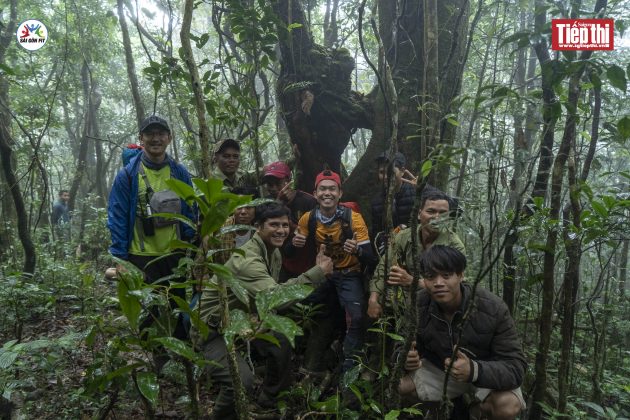HCMC – Dak Nong Province is one of the most popular attractions in the Central Highlands with its marvelous landscapes, temperate climate and rich natural resources, attracting many tourists that love exploring the nature.
The rainy season in Dak Nong begins in May and ends in October, while the dry season is between November and April. February and March offer the best weather to visit the province, while rainy months are the ideal time to explore magnificent waterfalls.
The province has diverse topography with plains lying between mountainous terrains. It’s also home to numerous rivers, waterfalls and lakes.
Tourists travelling to the province will enjoy the blooming season of wild sunflowers from end-October to end-November and of coffee flowers in March.
Below are some of the most favorite attractions in Dak Nong.
Dak Nong Geopark
Dak Nong Geopark covers 4,760 square kilometers encompassing Krong No, Cu Jut, Dak Mil, Dak Song and Dak G’long districts and Gia Nghia Town.
The United Nations Educational Scientific and Cultural Organization’s (UNESCO) executive board early this month recognized the Dak Nong Geopark as one of the UNESCO Global Geoparks, the third park in Vietnam to have been conferred this honor so far.
According to the UNESCO, the geopark’s geological formation began between 165 million and 200 million years ago when the area was part of the ancient Gondwana supercontinent.
More recent volcanic activities, about tens of thousands of years ago, have endowed it with spectacular craters, majestic waterfalls and Southeast Asia’s most extensive system of caves numbering in the hundreds.
With its geological morphology and varied soil and climatic conditions, the geopark is home to a rich range in biodiversity and ecosystems, including many endemic rare species.
Ta Dung Nature Reserve
The Ta Dung Nature Reserve covers some 22,000 hectares on the Ta Dung mountain range in Dak Som Commune, Dak Glong District.
The nature reserve, lying between Dak Nong and Di Linh plateaus, is dubbed “Halong Bay of Dak Nong” thanks to its unspoiled beauty. Its highest mount, also called Ta Dung, is 1,982 meters above sea level.
Ta Dung has cool climate all year round with diverse flora and fauna species, including rare animals and birds listed in Vietnam’s Red Book.
Chu Bluk volcanic cave system
The Chu Bluk volcanic cave system in Buon Choah Commune, Krong No District is a must-see destination for tourists who love exploring caves.
Chu Bluk comprises more than 100 caves of different sizes, each owning unique shape and landscape, that were formed from lava millions of years ago. Among them, C7 Cave is the longest cave in Southeast Asia with the length of more than 1,000 meters.
Yok Don National Park
Established in 1992, Yok Don is the second biggest national park and the only national park to conserve dry deciduous dipterocarp forests in Vietnam.
The park boasts a wealth of wildlife, including 89 species of mammals, 305 species of birds, 16 species of amphibians, 48 species of reptiles and 858 species of plants, hundreds of species of freshwater fish and thousands of species of insects. Many of these species are listed in the International Union for Conservation of Nature’s Redbook.
The park offers a variety of services such as birdwatching, trekking, camping, boat trips on the Srepok River, cycling through forests, and traditional cooking classes.
Dray Sap Waterfall
The 50-meter-high Dray Sap Waterfall on the Srepok River in Krong No District is considered the most magnificent waterfall in the Central Highlands.
In the language of E De ethnic minority people, Dray Sap literally means “smoke waterfall” as the waterfall is covered in dense steam that looks like smoke.
Dray Sap Waterfall is tied with the myth of a woman named H’Mi, who was swallowed by a monster while she was dating with her boyfriend. H’Mi then transformed into the waterfall while her lover turned into big trees to guard the waterfall.
By Minh Tuan











